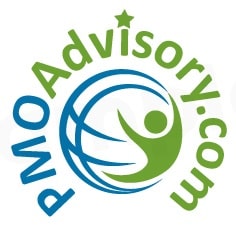Portfolio Management – Linking Strategy with Execution
In our current intensely competitive environment, organizations confront the inevitable choice of achieving and thriving versus declining and even dying. One result of this competition is the tremendous increase in the amount of good ideas as evidenced by the bold initiatives ranging from driverless vehicles to an entirely new economy based on apps. Regardless of your industries, good ideas are now common place. The strategic differentiation was never achieved on ideas alone, and this is truer today than ever before. What sets organizations apart is their strategic business execution ability that harnesses their ideas and turns them into tangible benefits. Superior performance requires execution excellence in making sound choices and executing those choices well.
Project management has been the discipline of choice for business execution. Since its founding as a formal school of study in the 1950’s, project management has itself become the preeminent approach to implementing one time and often complex initiatives. Yet the results are mixed at best. A PMI recent study showed that of every $1 USD billion spent on projects, about $122 million USD are wasted. The Standish Group, which has been studying information technology projects since 1994 has placed the success rate less than 33% nearly every single year since inception. In 2015, the success rate was about 29% – dismal by any standard.
When examined under closer scrutiny, the problem of success can be largely divided into two areas: 1) doing the right projects and 2) doing the projects right. Project management, and by extension – program management – has largely been focused on the second problem of “doing the projects right”. When organizations apply a more disciplined approach to project management, the improvements are significant. For example, in the same PMI study in 2016, 71% of projects meeting original goals and business intent when project management culture is a high priority, versus 52% of projects for when project management culture is a low priority. This improvement of nearly 20% translates to huge amounts of saving. Yet, “doing the project right” is only half of the equation. Are the right projects being done in the first place? For example, how many of the readers here have ever questioned the importance of the projects that they worked on?
Research on strategy implementation success has shown results as high as 90% failure. Two of the biggest reasons is poor project selection and weak executive support. To me, these are the same problems. Assuming executives do not come to work in the morning with the desire to sabotage their organization and waste their resources, why would executive support decline after project approval? The biggest reason is simple – they no longer see the importance of these projects. Thus, poor project selection is the main root cause, and this is the domain of portfolio management.
The importance of portfolio management is highlighted when PMI introduced a new certification – Portfolio Management Professional (PfMP) in 2014. This new professional certification serves as the top of the project management career ladder, helping to highlight the importance of the discipline but also instilling project, program, and portfolio management as important topics in the board room. Portfolio Management has finally arrived.
In 2016, I had the pleasure of presenting at four PMI symposiums – New Jersey, Tampa, Silicon Valley, and Chicagoland, and the topic of portfolio management was presented twice (New Jersey and Chicagoland) due to its popularity. Here are the highlights from the presentation:
- Highly effective portfolio management yields a 36% improvement on completing projects on time versus minimally effective portfolio management.
- For return on investment, the improvement is 29%.
- PMI identified five drivers to effective portfolio management:
- Senior Management Receptivity
- Competent Portfolio Governance
- Standardized Metrics and Criteria
- Consistency and Logic of Organizational Strategic Objectives
- Mature Project Management Office
- The presentation goes on to provide a simple 3-step process to implement portfolio management in your organizations.
- Define – Determine the organization strategy, organization needs, amount of project work, and optimal governance
- Align – Ensure portfolio components (e.g. projects and programs) are aligned with strategy
- Monitor, Control, and Optimize – Closely track the progress of portfolio decisions and execution, and constantly look for ways to improve organization’s execution abilities.
To download the presentation presented in Tampa, Florida, from September 2016, click here. The password to open is “pmoadvisory”.
To learn more about our courses and bootcamps in Portfolio Management, visit us at www.pmoadvisory.com/pfmp. In addition to a regular series of courses and bootcamps, we are offering a special 1-day course in February 2017 in New York. Visit https://www.pmoadvisory.com/pfmp/essential/ for more information.
